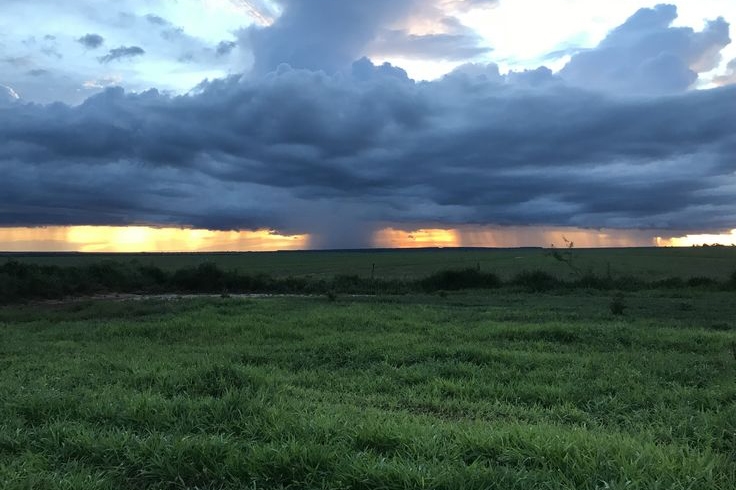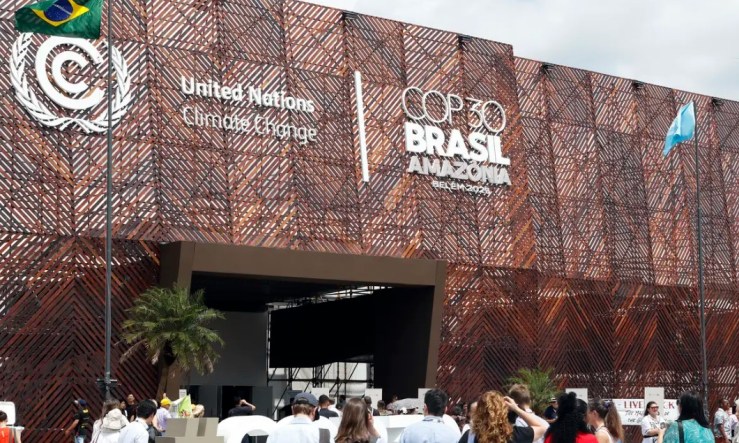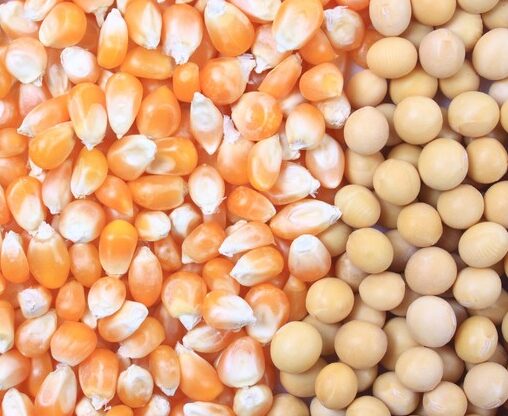Initial impressions indicating an unprecedented corn harvest in Brazil were confirmed in the field by the Rally da Safra teams during the second harvest assessment stage. Based on the results of the expedition, Agroconsult, the organizer of the Rally, estimates a production of 123.3 million tons (mmt) of second-crop corn – an increase of 10.4 mmt over the previous estimate (from May 21) and 20.2 mmt over the 23/24 harvest.
The national average productivity reached a record level of 113.8 bags per hectare – the highest ever achieved in the country. At the start of the corn stage, the estimate was 105 bags per hectare, but a set of factors contributed to the positive adjustment.
 The weather was crucial to the outcome. Despite the delay in the start of planting, the rains in April, May and even June ensured that there was no lack of moisture in the fields for the grains to fill. So far, the absence of widespread frosts has been a positive factor. According to André Debastiani, coordinator of the Harvest Rally, this allowed for the maintenance of high levels of productivity in both the earliest, medium and late-planted crops. “In general, the potential we saw in the early crops is not much different from previous years, but the late crops in this harvest will deliver a productivity never seen before. And this only occurred due to the prolonged rains”, explains Debastiani.
The weather was crucial to the outcome. Despite the delay in the start of planting, the rains in April, May and even June ensured that there was no lack of moisture in the fields for the grains to fill. So far, the absence of widespread frosts has been a positive factor. According to André Debastiani, coordinator of the Harvest Rally, this allowed for the maintenance of high levels of productivity in both the earliest, medium and late-planted crops. “In general, the potential we saw in the early crops is not much different from previous years, but the late crops in this harvest will deliver a productivity never seen before. And this only occurred due to the prolonged rains”, explains Debastiani.
Crop conditions also confirm these figures. Even with a small reduction in the plant population in some regions – especially in the West and Southeast regions of Mato Grosso – there was a significant increase in the number of ears and grains per ear. And despite the high incidence of caterpillars, which caused great concern, phytosanitary control was efficient, resulting in a low impact on production.
In this scenario, all major states recorded record productivity. Mato Grosso is expected to reach a historic volume: 131.9 bags per hectare, representing an increase of 11.6% compared to the previous harvest. Goiás will also have a record, with 126.1 bags per hectare, an increase of 5.6%. The same is true for Mato Grosso do Sul, with 98.1 bags per hectare, an increase of a significant 35.1%, and Paraná, with 106.5 bags per hectare, an increase of 16.5%.
The growth in production is also supported by an expansion of 5.7% in the planted area of the second crop in relation to the previous season, totaling 18.1 million hectares (an increase of 982 thousand hectares). The use of Agroconsult's Cropdata tool, which allows detailed assessment of each plot via satellite, was essential for
the new review of the cultivated area, which brought a result of 1.2 million hectares above the official number released by Conab.

Photo: Shutterstock
With the summer corn harvest totaling 27 mmt, total production is expected to reach 150.3 mmt – 21.3 mmt more than last year and posing challenges to the entire corn chain. “The country will face logistical issues, especially related to storage. It is expected that a significant portion of the corn will be stored outdoors, as has happened in previous years, putting pressure on the transportation and export infrastructure,” says Debastiani.
On the domestic consumption side, there are reasons for optimism. The feed market is showing signs of recovery, especially after the avian flu outbreak has been controlled and overcome. In addition, the corn ethanol market remains buoyant, boosting demand for the grain. With these factors, domestic consumption is expected to reach 97 mmt.
Regarding exports, although the initial forecast for the second half of the year points to a volume of 44.5 mmt, the pace of shipments will be subject to the behavior of the main purchasing markets and the international situation. The results of the American and Argentinean harvests, in addition to geopolitical events such as the development of the war between Israel and Iran – Iran is one of the largest buyers of Brazilian corn – may have a considerable impact on external demand.
Field evaluation
Six teams toured second-crop corn fields between May and June, adjusting productivity estimates in the states of Mato Grosso, Rondônia, Goiás, Mato Grosso do Sul and Paraná. Sponsored by Banco Santander, OCP Brasil, BASF, Credenz(R) and SoyTech(tm) (BASF seed brands), xarvio(R) (the Rally's official digital platform), BIOTROP, JDT Seguros, TIM Brasil and Viasoft, the 22nd edition of the Harvest Rally evaluated the Mid-North, West and Southeast of Mato Grosso, the Vilhena region in Rondônia, North and South of Mato Grosso do Sul, Southwest of Goiás and North and West of Paraná.
After a total of 124 days of work, the Rally covered almost 104 thousand kilometers, with 22 teams in the field, evaluating the conditions of more than 2.2 thousand soybean and corn crops during the development and harvest phases in the states of Mato Grosso, Rondônia, Goiás, Minas Gerais, Mato Grosso do Sul, Paraná, Santa Catarina, São Paulo, Rio Grande do Sul, Pará, Maranhão, Piauí, Tocantins and Bahia, in addition to the Federal District. There were 1.6 thousand soybean and 608 corn crops evaluated, four regional technical events and four special events and 349 producers and technicians visited. The areas evaluated by the 2025 Harvest Rally account for 97% of the soybean production area and 72% of the corn area.
Unprecedented stage: cotton

Between July and August, the Harvest Rally will carry out an unprecedented survey in the two main cotton producing states in Brazil (MT and BA). Given the gaps in the collection and analysis of cotton production data, especially in terms of planted area, productivity and market conditions, expedition technicians will
technical visits to some of the largest agricultural groups in the country. “The cotton stage will be a milestone in generating qualified information for the sector, helping to answer strategic questions such as the real productivity of Brazilian cotton and how it has evolved, traceability and certifications, processing practices and the logistical and commercial challenges faced by the sector”, explains the expedition coordinator.
Field work includes meetings with rural producers who are leaders in cotton production, visits to processing units, analyzing the quality and efficiency of the post-harvest process and gathering technical and market information, in addition to regional technical events in Cuiabá and Luís Eduardo Magalhães. The results of this stage will be released in September.





